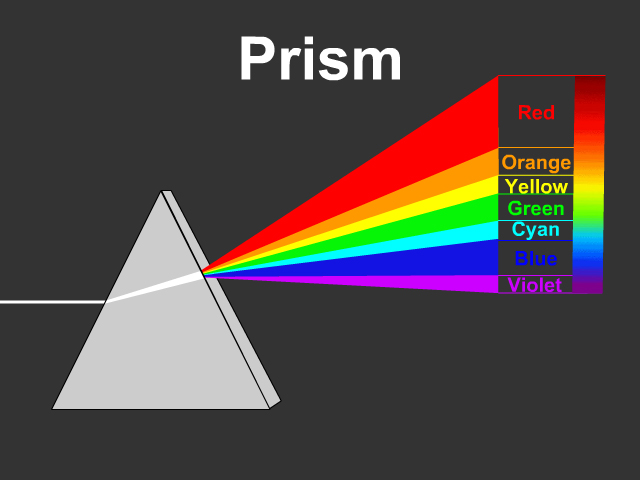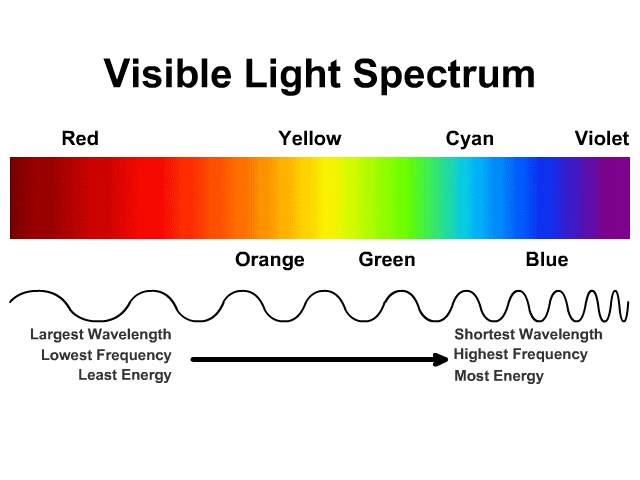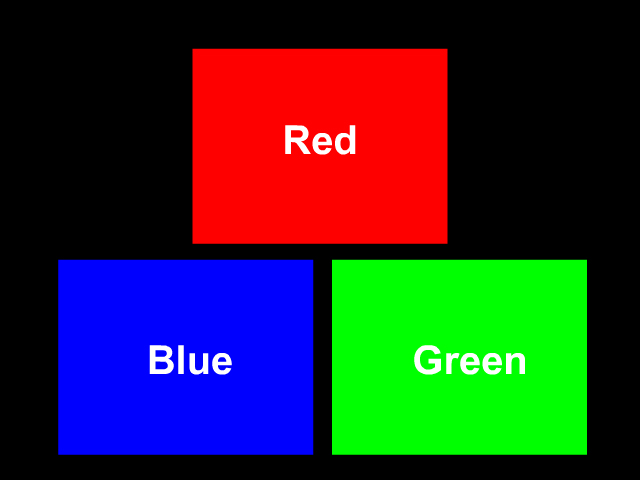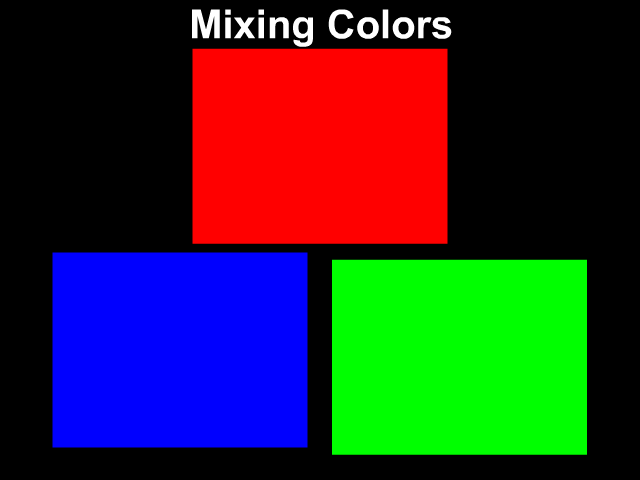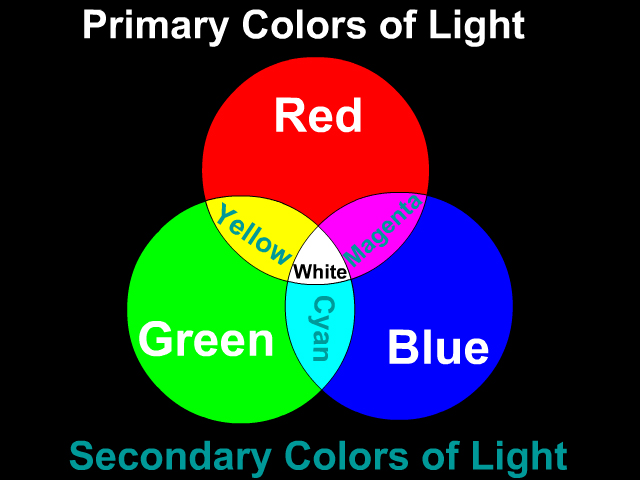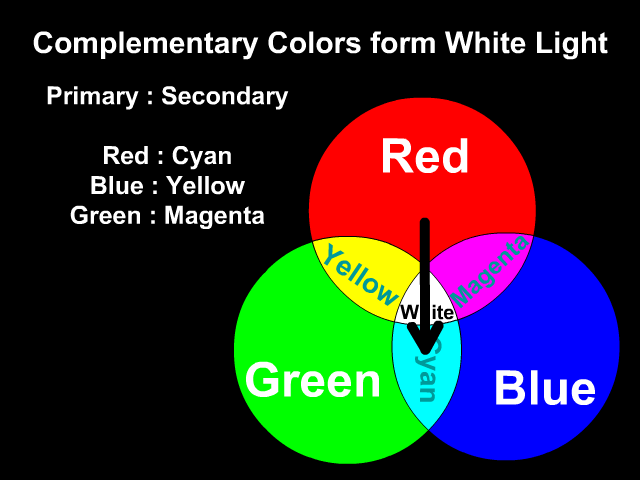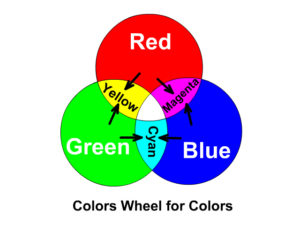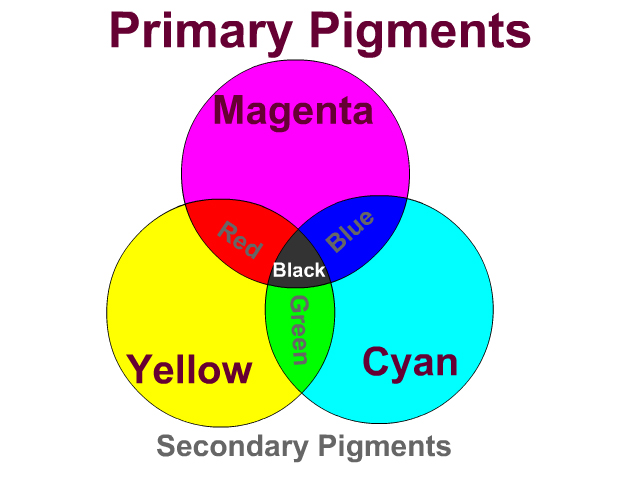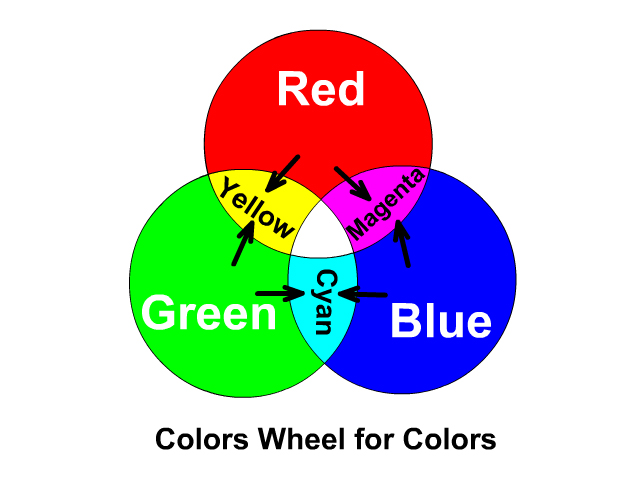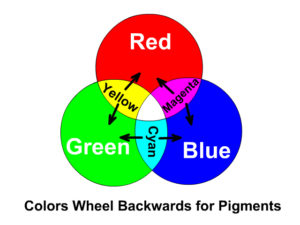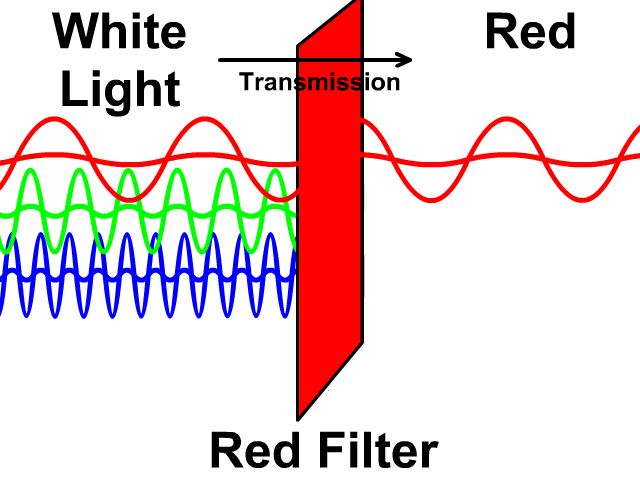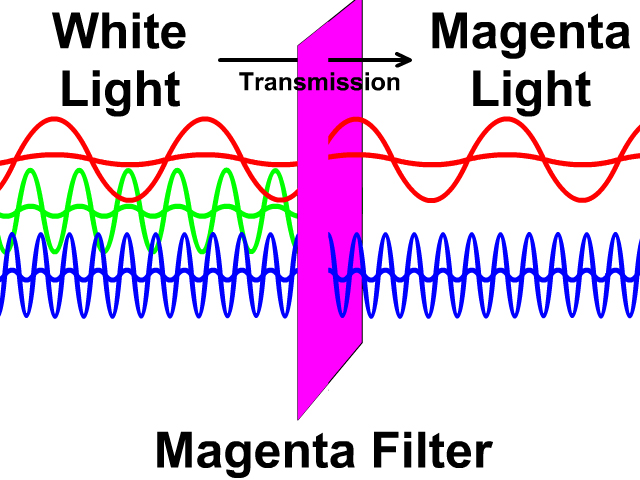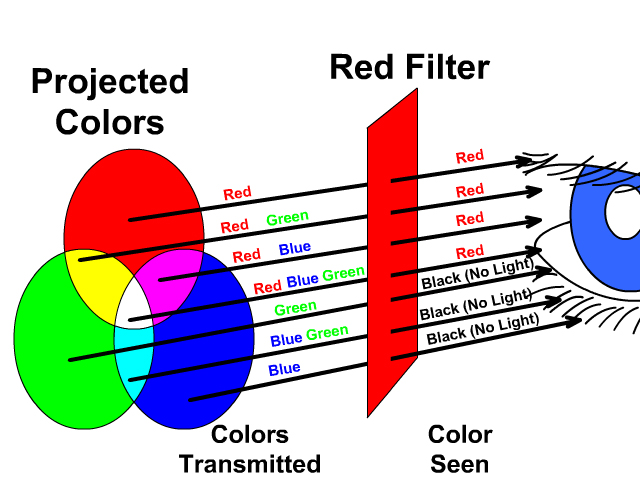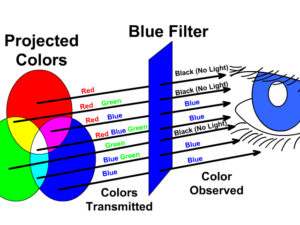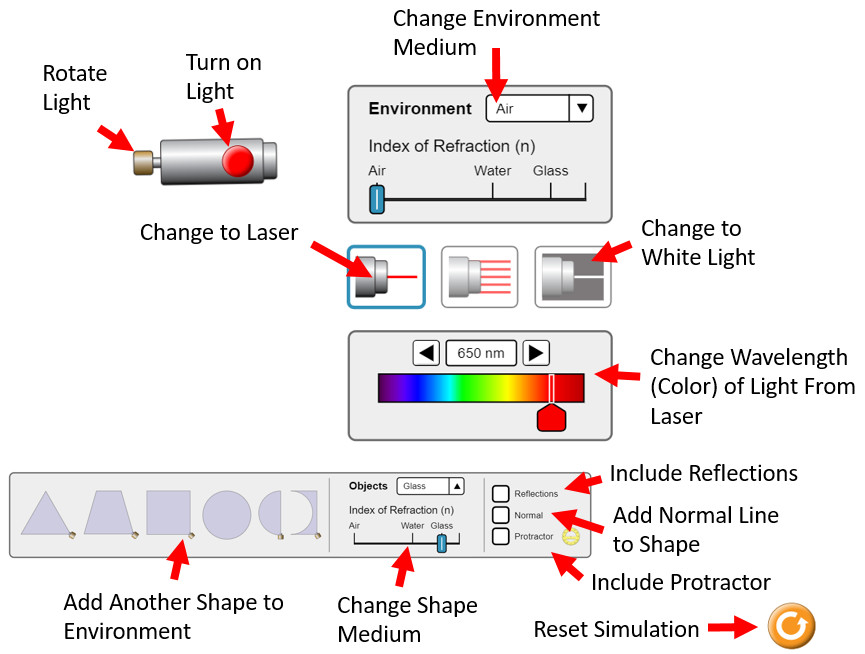Colors of Light
Visible light ranges from around 430 x 1012 Hz to 770 x 1012 Hz. White light is a combination of all the colors of the rainbow. Learn about the color of light and work through practice questions.
Refraction of a Prism
When all colors of light are mixed together they forms white light.
A prism is a triangular column that uses the property of a wave called refraction to separate the colors of light. The prism is commonly made of glass which is more dense than the air. Going from air to glass slows light down creating a bending. Going from glass to air speeds light up bending it again.
Different frequencies of light will refract at slightly different angles resulting in a separation from white light. White light becomes the rainbow pattern you see when colors of different frequencies separate.
Visible Light Spectrum Colors
Many people have used the mnemonic ROYGBIV. This was a great way to remember the light color spectrum until someone decided to change it. Not the actual colors of light in a rainbow but what we name as the colors of light. Indigo in no longer included and cyan was added between green and blue. The new less catchy mnemonic is ROYGCBV. From largest wavelength to shortest the colors go Red, Orange, Yellow, Green, Cyan, Blue, and Violet.
- Red light has the largest wavelength, lowest frequency, and least energy.
- Violet light has the smallest wavelength, highest frequency, and most energy.
Example Questions
1. Does orange or red light have a higher frequency?
2. Does violet or green light have a larger wavelength?
3. Does violet or red light have more energy?
Primary Colors of Light
The three primary colors of light are red, blue, and green. If you have heard otherwise it was likely pigment your teacher was talking about. Pigment is what you would use when painting or coloring. Color is light. Red color would be projected from a flashlight with a red filter only letting that color light through. In the picture, the three primary colors are on a black background with the absence of any light.
Drawing the color wheel diagram:
- Draw three circles on your paper all overlying the other two.
- Place a separate primary color (red, green, or blue) in each circle in the area furthest from the middle.
- Next place the mixed secondary colors in the areas between the circles
- Primary red and green form the secondary yellow
- Primary red and blue form the secondary magenta
- Primary green and blue form the secondary magenta
- Lastly place white in the middle because it results when you mix all color of light.
Complementary Colors of Light
Complementary colors are a primary and secondary colors that combine to form white light. Cyan is a secondary color which is the same as having blue and green in one place. Since blue and green mix with red to form white light, cyan can mix with red light to form white light.
You can use your color diagram to determine the secondary that mixes with the primary color. The secondary color that is complement to each primary is directly across from it. Notice how the complementary color is found in our animation here.
Complementary Colors
- Primary + Secondary = White Light
- Red + Cyan = White Light
- Blue + Yellow = White Light
- Green + Magenta = White Light
What happens when you mix a primary color with a non-complimentary secondary color?
If you mixed the secondary color yellow with red you get yellow. Yellow is already red and green combined. Having another red light would intensify the red light but you still have only red and green light which makes yellow.
Green + Red = Yellow
Green + Red + Red = Still Yellow
Example Questions
4. What are the primary colors of light?
5. What are the secondary colors of light?
6. What color do you get when you mix red and green light?
7. What color do you get when you mix red and blue light?
8. What color do you get when you mix yellow and blue light?
9. What color do you get when you mix yellow and green light?
10. What is a complementary color?
11. What is the complementary color of red?
Primary Pigments
Pigments are what you are using while drawing or painting. Pigments subtract light. When you mix all the pigments together they subtract all color and form black.
- Colors are additive and add light and while pigments are subtractive and take away light
The primary pigments are the secondary colors. The secondary pigments are the primary colors.
You can make a pigment wheel diagram kind of like the color wheel diagram. Instead of primary colors in the color wheel diagram, primary pigments are placed on the outsides or the pigment wheel diagram.
Between the primary pigments in the pigment wheel diagram are the mixed secondary pigments.
- Primary Pigment + Primary Pigment = Secondary Pigment
- Magenta + Cyan = Blue
- Cyan + Yellow = Green
- Yellow + Magenta = Red
All primary pigments mix to form black:
- Magenta + Cyan + Yellow = Black
Complementary Pigments
The complimentary pigments form black. The complimentary pigment would be directly across from the primary.
- Primary Pigment + Secondary Pigment = Black
- Magenta + Green = Black
- Cyan + Red = Black
- Yellow + Blue = Black
| Primary Pigments | Secondary Pigments |
| Magenta | Red |
| Yellow | Blue |
| Cyan | Green |
Using the Color Wheel for Pigments
Instead of drawing a color wheel and pigment wheel to answer questions, you can read the color wheel backwards for pigments. The inside of the color wheel will be the primary pigments. Following the primary pigments outwards, as seen by the arrows, tells you what secondary pigment is produced when two primary pigments mix.
My advice for any questions in this unit is to draw the color wheel on a quiz or test and use it inwards for colors and outward for pigments.
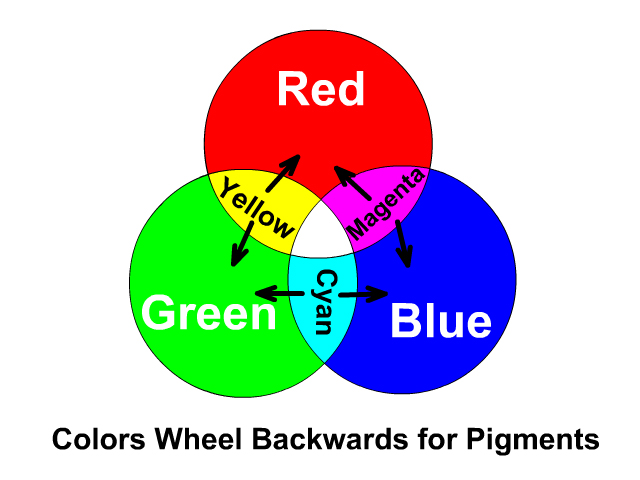

12. How are colors different that pigments?
13. What are the primary pigments?
14. What are the secondary pigments?
15. What pigment do you get when mixing yellow and magenta?
16. What pigment do you get when mixing cyan and yellow?
17. What pigment do you get when mixing cyan, yellow, and magenta?
Primary Color Filter
A light filter can be used to absorb some light while allowing others through. If a primary color filter (red, blue, or green), only light of that primary color will be transmitted.
If you are looking through a red filter, light will appear red or black if that color of light is not present.
In this picture we have all the primary colors projected through a red filter.
On the left you see the colors consisted in the color. If a secondary color you see two primary colors. If white light you see all three colors.
On the right side a person would see red light if that was present. All other colors get absorbed and you would see black if that was not present when transmitted through the filter.
Example Problems
18. What color would you see if looking through a red filter at yellow light?
19. What color would you see if looking through a blue filter at yellow light?
20. What color would you see if looking through a yellow filter at magenta light?
Interactive Refraction Simulation
Use the PhET Interactive below to study the properties of light.
Click on Prisms in the simulation below and follow the directions in the picture to change variables.
Explore with our prisims minilab. (Click Here to Download the Prisms Minilab)
Links
- On to the Refraction and Snell's Law
- Back to the Main Electromagnetic Waves Page
- Back to the Stickman Physics Home Page
- Equation Sheet

